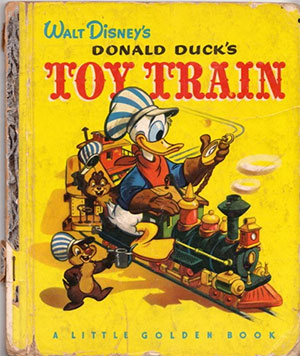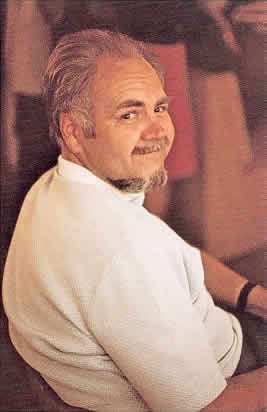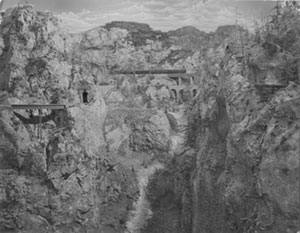I think model railroading is a fantastic hobby for many reasons, not the least of which is it gives an individual the opportunity to learn about many different things. You can start with design, geometry, and carpentry and move up to civil engineering, city planning, artistry, and the study of human nature. And that’s all without leaving the comfort of your own home!
Steve and I have been talking about the developments of our articles and decided that we should start from the very beginning and work onward. I’m a big believer that model railroaders build their own cultures and sub-cultures around model railroading in general, and then specifically around a particular aspect of railroading and modeling for which they have such passion that they want to try to create it in miniature.
So this brings me to my “microcosm” theory. We want to develop our own “world” that is a place to focus our passions and brings us joy. Our microcosm could be in the present day or in the past. It could be in the mountains, the desert, or farmland. It could be in our home town or thousands of miles away. We can include or exclude anything we want in our microcosm, because it’s OUR microcosm!
I believe that model railroading is three-dimensional art and we are the artists. Further, I believe there is a fourth dimension as well – the mystical world of our creative and theatrical selves. This is where we step outside the box of real world restrictions and bring our fantasy world to life.
This brings me to step #1 in our new series on how to plan and build a model railroad layout:
Ask yourself, “Why do you want to build a layout in the first place?”
In my case, first and early impressions were very important in answering this question. For example, I grew up in an industrial suburb of Minneapolis, Minnesota with lots of train action. Engines were big, loud, moving machines. Certainly the most exciting thing going on in my town! What’s not for a young boy to like?

I received my first Flyer train set for Christmas when I was 3 years old. WOW!! Then as I got older I was able to ride the short line railroad that passed by my house with a neighbor, Harry Steadman, who worked as a freight conductor. He was very accommodating and I could pretty much ride the power or the caboose whenever I liked. I really got to see what the “business” of short line railroading was all about.

The St. Louis Park depot, where I spent many happy hours, is still standing, although in a new location. Around that same time I met another neighbor, Gene Hickey, who was an architect by trade and became President of the NMRA (National Model Railroad Association). He designed and built his own buildings for his layout, and used real rocks and gravel for his scenery along with plaster.

I was also able to view the famous Gorre & Daphetid layout built by John Allen of Monterrey, California while on vacation with my parents. He was known as the “Wizard of Monterrey” and that he was. He had an HO layout with floor to ceiling mountain walls!

Well, my mind was blown – I had to start creating my own empire! So, that’s why I needed to build my own layout. What’s yours?
Next time, we’ll continue the series by answering another question: “How do you choose the right layout design?”
More in this series:
So You Want to Build a Model Railroad Layout?
Choosing Model Railroad Track Configurations
Assigning a Theme for Your Model Railroad Layout
Ideas for Unique Layout Concepts
Tips on Trackwork
Helpful Tips for Model Railroad Wiring
Creative Ideas for Model Railroad Structures
I really enjoyed reading this 1st installment. Hope to be able to read them all. Thanks from this n gauger
Doug, you're doing a fantastic job of laying out these ideas regarding the why's and means of building a model railroad. Thank you
HO scale is to large so I want to build an N scale train. To begin, as a base, I have a banquet table. I plan to place a sheet of plywood on top of the table. My question is, if I lay the plywood directly on top of the table how do I get my wires underneath so I can light up my layout? Should I attach 1 x 2” strips under my plywood?
Thanks
Your mention of "develop our own 'world'" has another angle. I suggest to parents that a toy train set for the children is the least expensive toy they can buy. The don't believe it because they know a Lionel or similar set cost $200 dollars and up. I suggest they look in their child's closet and they will see toys that cost maybe $26 and the child played with for maybe six minutes. All of creative fun was done by the toy designer and not much left for the child. But with a toy train the child can change and modify and introduce their other toys indefinitely. So the cost per hour of play is very inexpensive. But what is REALLY going on is that train set opens up a child controlled world, not an adult controlled world.
Images for "https://www.modelrailroadacademy.com/article/planning-building-a-layout-part-1/" are not showing.
my wife and I are starting our own layout. this is my second layout her first when I built my last layout over 30 yrs ago I didn't use buildings. because it was a switch yard and logging no towns, farm or housing projects with cars. this is the first time for her . after 20 yrs together she decided that she wants to be involved and build the town, housing and farm. she wants to see pictures and videos of towns, farm, houses. she has watched some of these on here but says it only shows the trains not much time spent on towns or buildings. can you tell me which videos and pictures would be a good ones to watch to learn.